MSI GE76 Raider (2021) review – the 165W RTX 3080 shows near-desktop performance
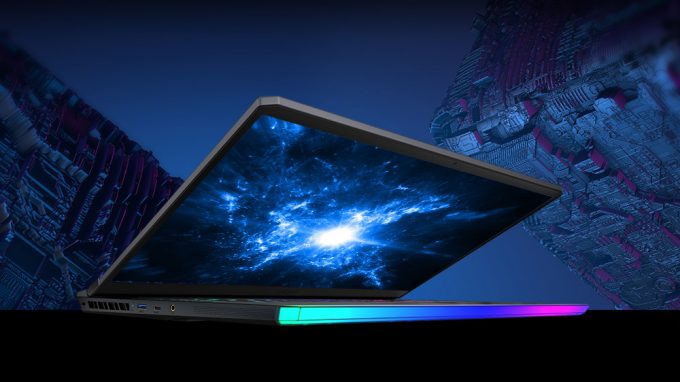 Apart from the cringy text on the land page of the GE76 Raider on MSI’s official website, everything about the device seems to be impressive. Its design notes are very similar to the GP series, but it definitely brings more flare with its huge LED strip.
Apart from the cringy text on the land page of the GE76 Raider on MSI’s official website, everything about the device seems to be impressive. Its design notes are very similar to the GP series, but it definitely brings more flare with its huge LED strip.
Earlier this year, we saw ASUS release the SCAR 17 G733, which was an impressive device with a ton of performance. However, at least on paper, the GE76 Raider (2021) seems like it can chew through its opponent. We are talking about up to Core i9-11980HK, and an RTX 3080 with 16GB of GDDR6 video memory, and up to 165W of TGP thanks to a firmware update.
Now, the impressive specs don’t end up here. Its display options are equally staggering. We are talking about a 360Hz 1080p panel, 165Hz and 240Hz 1440p panels, and a 120Hz UHD display. How insane is that?! With such an impressive specs sheet, things like the 2.5Gbit Ethernet and Wi-Fi 6 may slide unnoticed.
You can check the prices and configurations in our Specs System: https://laptopmedia.com/series/msi-ge76-raider-11ux/
Contents
Video Review
Specs Sheet
- HDD/SSD
- up to 16000GB SSD
- M.2 Slot
- 1x M.2 PCIe 4.0 x4 + 1x M.2 PCIe 3.0 x4 See photo
- RAM
- up to 64GB
- OS
- Windows 11 Home, Windows 10 Home, Windows 10 Pro, Windows 11 Pro
- Battery
- 99.9Wh, 4-cell
- Body material
- Plastic / Polycarbonate, Aluminum
- Dimensions
- 397 x 268.4 x 25.9 mm (15.63" x 10.57" x 1.02")
- Weight
- 2.90 kg (6.4 lbs)
- Ports and connectivity
- 2x USB Type-A
- 3.2 Gen 1 (5 Gbps)
- 1x USB Type-A
- 3.2 Gen 2 (10 Gbps)
- 1x USB Type-C
- 3.2 Gen 2 (10 Gbps)
- 1x USB Type-C
- Thunderbolt 4, Power Delivery (PD)
- HDMI
- 2.1 (8K@60Hz / 4K@120Hz)
- Displayport mini
- Card reader
- SD
- Ethernet LAN
- 10, 100, 1000, 2500 Mbit/s
- Wi-Fi
- 802.11ax
- Bluetooth
- 5.2
- Audio jack
- 3.5mm Combo Jack
- Features
- Fingerprint reader
- Web camera
- FHD
- Backlit keyboard
- Microphone
- Speakers
- 2x 2W Speakers + 2x 1W Woofers, Dynaudio
- Optical drive
All MSI GE76 Raider (11Ux) configurations
What’s in the box?
Inside this laptop’s packaging, we found some paper manuals, as well as a 280W power brick. Thankfully, the device is neatly snugged in a protective cloth.
Design and construction
MSI GE76 Raider (2021)’s body is made out of aluminum with some plastic elements. The most prominent design feature here is definitely the huge LED bar in the front of the device. Of course, it is controllable through the software that comes with the laptop. In terms of measurements, we see that it’s not in the league of thin and light devices. However, with its 25.9mm thickness and 2.90 kg of weight, it is far more portable than the top-of-the-line laptops from a couple of years back. Like the Acer Predator Helios 700, which was a humongous machine.
Here, opening the lid with a single hand is as easy as spelling MSI. The impressive panel inside is surrounded by relatively thin bezels, and we are happy to see that the Web camera here comes with 1080p video capture.
Next, let’s check out the base. The first thing we notice is that the keyboard is surrounded by a couple of speaker grills that are extremely subtle. The board itself has a Per-key RGB backlight, which can be synced with the LED bar below. Also, it has a super long key travel and very consistent tactile feedback. Ultimately, it is one of the best keyboards for both gaming and typing. Additionally, there is a NumberPad segment, while the Arrow keys have a decent size. Their only downside is the proximity to the rest of the keys, which leads to some accidental mistypes.
It is good to see that there is very little deck flex there. As for the touchpad, it is a bit small, but its accuracy is outstanding. Of course, this is further aided by the fast-refresh-rate display.
You can’t have missed the fact that the exhaust of hot air here is happening from four super big grills – one on each side, and two on the back. On the bottom panel, there are fresh air vents. Now, we already said that there is a set of speakers surrounding the keyboard. However, there are two more, placed on the sides, which act as woofers.
Ports
On the left side, there is a USB Type-A 3.2 (Gen. 2) port, a USB Type-C 3.2 (Gen. 2) port, and an audio jack. On the left – you get two USB Type-A 3.2 (Gen. 1) ports split by an SD card reader. That’s not all, as the backside of the laptop holds a Mini DisplayPort, a Thunderbolt 4 connector, an RJ-45 connector, an HDMI connector, and the power plug.
Disassembly, upgrade options, and maintenance
To get inside of this device you have to undo 13 Phillips-head screws. Then, carefully pry the bottom panel with a plastic tool or a guitar pick.
This notebook is right on the limit of air transportation. Its battery has a capacity of 99.9Wh.
There are two RAM SODIMM slots for up to 64GB of memory in dual-channel. Storage-wise, you get two M.2 slots. One with 3rd generation PCIe and one with 4th generation.
There is a total of 6 heat pipes on this device. Unfortunately, the CPU seems to be cooled by only two of them, but on the bright side, the graphics memory has active cooling.
Display quality
MSI GE76 Raider (2021) is equipped with a 300Hz Full HD IPS panel, model number AUO B173HAN05.1 (AUO348E). Its diagonal is 17.3″ (43.94 cm), and the resolution is 1920 х 1080 pixels. The screen ratio is 16:9, and we are looking at a pixel density of – 127 ppi, and a pitch of 0.2 х 0.2 mm. The screen turns into Retina when viewed at distance equal to or greater than 69cm (27″) (from this distance one’s eye stops differentiating the separate pixels, and it is normal for looking at a laptop).
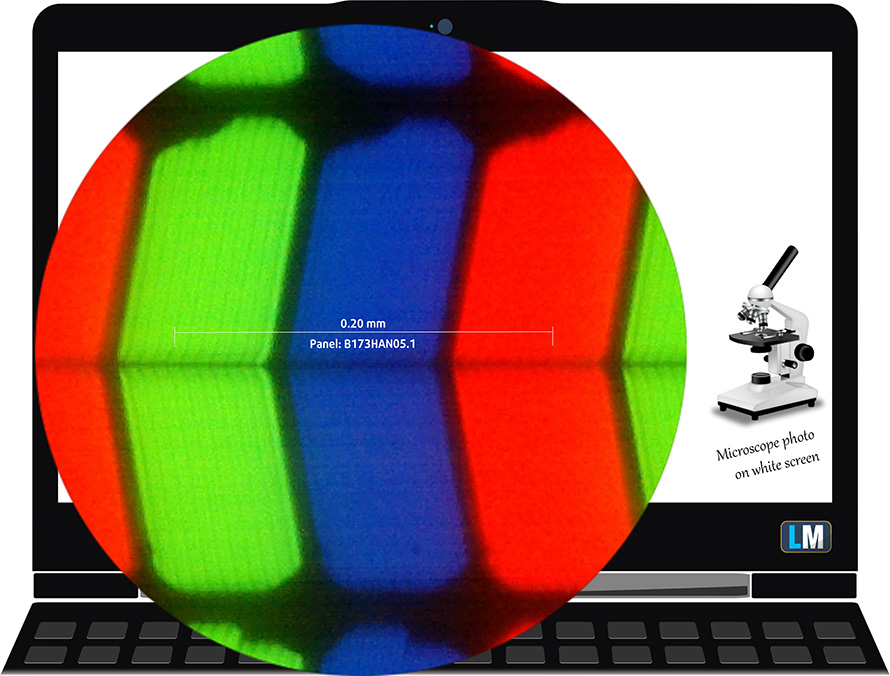
Viewing angles are comfortable. We offer images at 45° to evaluate image quality.

Also, a video with locked focus and exposure.
The measured maximum brightness of 310 nits in the middle of the screen and also 305 nits as an average for the whole area, with a maximum deviation of 5%. The Correlated Color Temperature on a white screen is 6530K – matching the optimal for the sRGB standard of 6500K.
In the illustration below you can see how the display performs from a uniformity perspective. In other words, the leakage of light from the light source.
Values of dE2000 over 4.0 should not occur, and this parameter is one of the first you should check if you intend to use the laptop for color-sensitive work. The contrast ratio is good – 1000:1.
MSI GE76 Raider (2021) offers customization and calibration of the display thanks to the MSI True Color app. Here are some screenshots.
To make sure we are on the same page, we would like to give you a little introduction to the sRGB color gamut and the Adobe RGB. To start, there’s the CIE 1976 Uniform Chromaticity Diagram that represents the visible specter of colors by the human eye, giving you a better perception of the color gamut coverage and the color accuracy.
Inside the black triangle, you will see the standard color gamut (sRGB) that is being used by millions of people on HDTV and on the web. As for the Adobe RGB, this is used in professional cameras, monitors, etc for printing. Colors inside the black triangle are used by everyone and this is the essential part of the color quality and color accuracy of a mainstream notebook.
Still, we’ve included other color spaces like the famous DCI-P3 standard used by movie studios, as well as the digital UHD Rec.2020 standard. Rec.2020, however, is still a thing of the future and it’s difficult for today’s displays to cover that well. We’ve also included the so-called Michael Pointer gamut, or Pointer’s gamut, which represents the colors that naturally occur around us every day.
The yellow dotted line shows MSI GE76 Raider (2021)’s color gamut coverage.
Its display covers only 94% of the sRGB/ITU-R BT.709 (web/HDTV standard) in CIE1976.
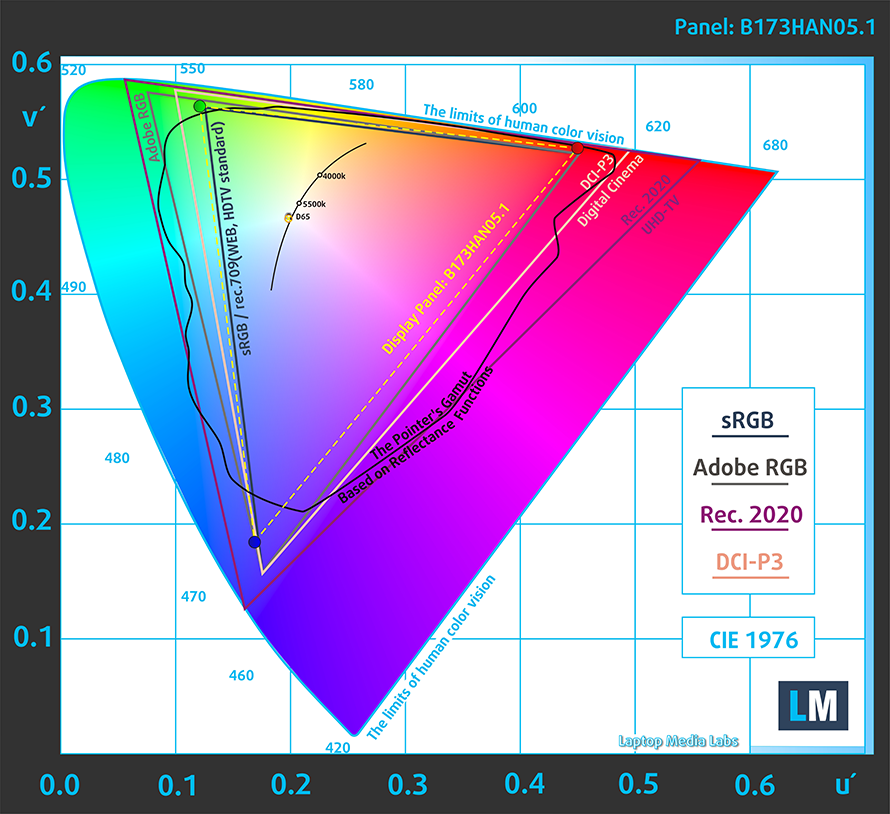
Our “Design and Gaming” profile delivers optimal color temperature (6500K) at 140 cd/m2 luminance and sRGB gamma mode.
We tested the accuracy of the display with 24 commonly used colors like light and dark human skin, blue sky, green grass, orange, etc. You can check out the results at factory condition and also, with the “Design and Gaming” profile.
Below you can compare the scores of MSI GE76 Raider (2021) in its sRGB View Mode in MSI’s settings and with the “Gaming and Web design” profile.
The next figure shows how well the display is able to reproduce really dark parts of an image, which is essential when watching movies or playing games in low ambient light.
The left side of the image represents the display with stock settings, while the right one is with the “Gaming and Web Design” profile activated. On the horizontal axis, you will find the grayscale, and on the vertical axis – the luminance of the display. On the two graphs below you can easily check for yourself how your display handles the darkest nuances but keep in mind that this also depends on the settings of your current display, the calibration, the viewing angle, and the surrounding light conditions.

Response time (Gaming capabilities)
We test the reaction time of the pixels with the usual “black-to-white” and “white-to-black” method from 10% to 90% and vice versa.
We recorded Fall Time + Rise Time = 9 ms. When OverDrive is Off and 7ms when it’s On.
After that, we test the reaction time of the pixels with the usual “Gray-to-Gray” method from 50% White to 80% White and vice versa between 10% and 90% of the amplitude.
PWM (Screen flickering)
Pulse-width modulation (PWM) is an easy way to control monitor brightness. When you lower the brightness, the light intensity of the backlight is not lowered, but instead turned off and on by the electronics with a frequency indistinguishable to the human eye. In these light impulses, the light/no-light time ratio varies, while brightness remains unchanged, which is harmful to your eyes. You can read more about that in our dedicated article on PWM.
The backlight of the MSI GE76 Raider (2021) doesn’t use PWM to adjust its levels of brightness. This means the display is comfortable for use, without presenting any excessive eye strain in this aspect.

Blue light emissions
Installing our Health-Guard profile not only eliminates PWM but also reduces the harmful Blue Light emissions while keeping the colors of the screen perceptually accurate. If you’re not familiar with the Blue light, the TL;DR version is – emissions that negatively affect your eyes, skin, and your whole body. You can find more information about that in our dedicated article on Blue Light.
Buy our profiles
Since our profiles are tailored for each individual display model, this article and its respective profile package are meant for MSI GE76 Raider (2021) configurations with 17.3″ FHD IPS AUO B173HAN05.1 (AUO348E).
*Should you have problems with downloading the purchased file, try using a different browser to open the link you’ll receive via e-mail. If the download target is a .php file instead of an archive, change the file extension to .zip or contact us at [email protected].
Read more about the profiles HERE.
In addition to receiving efficient and health-friendly profiles, by buying LaptopMedia's products you also support the development of our labs, where we test devices in order to produce the most objective reviews possible.

Office Work
Office Work should be used mostly by users who spend most of the time looking at pieces of text, tables or just surfing. This profile aims to deliver better distinctness and clarity by keeping a flat gamma curve (2.20), native color temperature and perceptually accurate colors.

Design and Gaming
This profile is aimed at designers who work with colors professionally, and for games and movies as well. Design and Gaming takes display panels to their limits, making them as accurate as possible in the sRGB IEC61966-2-1 standard for Web and HDTV, at white point D65.

Health-Guard
Health-Guard eliminates the harmful Pulse-Width Modulation (PWM) and reduces the negative Blue Light which affects our eyes and body. Since it’s custom tailored for every panel, it manages to keep the colors perceptually accurate. Health-Guard simulates paper so the pressure on the eyes is greatly reduced.
Get all 3 profiles with 33% discount
Sound
MSI GE76 Raider (2021)’s speakers sound very good. Its low, mid, and high tones are clear of deviations. However, we see a significant rise at around about 4 kHz.

Drivers
All of the drivers and utilities for this notebook can be found here: https://www.msi.com/Laptop/support/GE76-Raider-11UX
Battery
Now, we conduct the battery tests with Windows Better performance setting turned on, screen brightness adjusted to 120 nits, and all other programs turned off except for the one we are testing the notebook with. This laptop’s 99.9Wh battery delivers 7 hours and 32 minutes of Web browsing, and 7 hours and 13 minutes of video playback.
In order to simulate real-life conditions, we used our own script for automatic web browsing through over 70 websites.
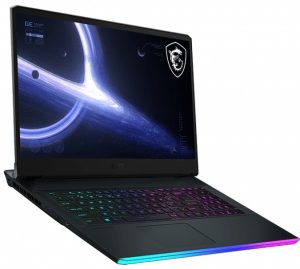
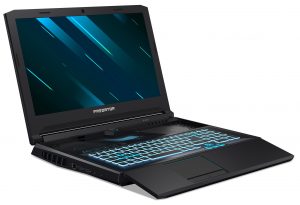
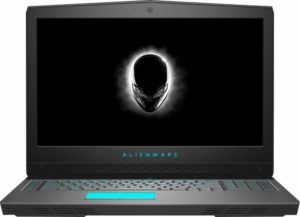
For every test like this, we use the same video in HD.



CPU options
This laptop can be purchased with one of two Tiger Lake H45 processors. We are talking about the two top products – Core i7-11800H, and Core i9-11980HK.
Results are from the Cinebench 20 CPU test (the higher the score, the better)
Results are from our Photoshop benchmark test (the lower the score, the better)
MSI GE76 Raider (11Ux) CPU variants
Here you can see an approximate comparison between the CPUs that can be found in the MSI GE76 Raider (11Ux) models on the market. This way you can decide for yourself which MSI GE76 Raider (11Ux) model is the best bang for your buck.
Note: The chart shows the cheapest different CPU configurations so you should check what the other specifications of these laptops are by clicking on the laptop’s name / CPU.
Results are from the Cinebench R23 CPU test (the higher the score, the better)
Results are from our Photoshop benchmark test (the lower the score, the better)
GPU options
Then, in the graphics department, you can choose between the GeForce RTX 3060 (130W), RTX 3070 (140W), and RTX 3080. The latter can be found in two iterations – one with 8, and one with 16GB of GDDR6 VRAM. What is more special about them, though, is that with the help of a firmware update, you can make them work at 165W, and extract the most performance out of them.
Results are from the 3DMark: Time Spy (Graphics) benchmark (higher the score, the better)
Results are from the 3DMark: Fire Strike (Graphics) benchmark (higher the score, the better)
Results are from the Unigine Superposition benchmark (higher the score, the better)
MSI GE76 Raider (11Ux) GPU variants
Here you can see an approximate comparison between the GPUs that can be found in the MSI GE76 Raider (11Ux) models on the market. This way you can decide for yourself which MSI GE76 Raider (11Ux) model is the best bang for your buck.
Note: The chart shows the cheapest different GPU configurations so you should check what the other specifications of these laptops are by clicking on the laptop’s name / GPU.
Results are from the 3DMark: Time Spy (Graphics) benchmark (higher the score, the better)
Results are from the 3DMark: Fire Strike (Graphics) benchmark (higher the score, the better)
Results are from the 3DMark: Wild Life (Graphics) benchmark (higher the score, the better)
Results are from the Unigine Superposition benchmark (higher the score, the better)
Gaming tests

Resolution: 1920 x 1080 (Full HD) |
MIN |
MED |
HIGH |
ULTRA |
|---|---|---|---|---|
| NVIDIA GeForce RTX 3080 (Laptop, 165W) | 153 FPS PLAY VIDEO | 115 FPS PLAY VIDEO | 70 FPS PLAY VIDEO | 39 FPS PLAY VIDEO |

Resolution: 1920 x 1080 (Full HD) |
MIN |
MED |
MAX |
|---|---|---|---|
| NVIDIA GeForce RTX 3080 (Laptop, 165W) | 299 FPS PLAY VIDEO | 299 FPS PLAY VIDEO | 245 FPS PLAY VIDEO |

Resolution: 1920 x 1080 (Full HD) |
NORMAL |
HIGH |
VERY HIGH |
MAX |
|---|---|---|---|---|
| NVIDIA GeForce RTX 3080 (Laptop, 165W) | 186 FPS PLAY VIDEO | 177 FPS PLAY VIDEO | 119 FPS PLAY VIDEO | 94 FPS PLAY VIDEO |

Resolution: 1920 x 1080 (Full HD) |
LOW |
MED |
HIGH |
ULTRA |
|---|---|---|---|---|
| NVIDIA GeForce RTX 3080 (Laptop, 165W) | 167 FPS PLAY VIDEO | 139 FPS PLAY VIDEO | 112 FPS PLAY VIDEO | 95 FPS PLAY VIDEO |

Resolution: 1920 x 1080 (Full HD) |
MIN |
MAX |
|---|---|---|
| NVIDIA GeForce RTX 3080 (Laptop, 165W) | 2695 FPS PLAY VIDEO | 108 FPS PLAY VIDEO |

Resolution: 1920 x 1080 (Full HD) |
LOW |
MED |
HIGH |
EPIC |
|---|---|---|---|---|
| NVIDIA GeForce RTX 3080 (Laptop, 165W) | 211 FPS PLAY VIDEO | 160 FPS PLAY VIDEO | 135 FPS PLAY VIDEO | 81 FPS PLAY VIDEO |

Resolution: 1920 x 1080 (Full HD) |
VERY LOW |
MED |
MAX |
|---|---|---|---|
| NVIDIA GeForce RTX 3080 (Laptop, 165W) | 701 FPS PLAY VIDEO | 584 FPS PLAY VIDEO | 539 FPS PLAY VIDEO |

Resolution: 1920 x 1080 (Full HD) |
LOW |
NORMAL |
HIGH |
MAX |
|---|---|---|---|---|
| NVIDIA GeForce RTX 3080 (Laptop, 165W) | 281 FPS PLAY VIDEO | 241 FPS PLAY VIDEO | 232 FPS PLAY VIDEO | 208 FPS PLAY VIDEO |

Resolution: 1920 x 1080 (Full HD) |
MIN |
MED |
ULTRA |
|---|---|---|---|
| NVIDIA GeForce RTX 3080 (Laptop, 165W) | 668 FPS PLAY VIDEO | 489 FPS PLAY VIDEO | 275 FPS PLAY VIDEO |

Resolution: 1920 x 1080 (Full HD) |
VERY LOW |
NORMAL |
ULTRA |
|---|---|---|---|
| NVIDIA GeForce RTX 3080 (Laptop, 165W) | 190 FPS PLAY VIDEO | 176 FPS PLAY VIDEO | 141 FPS PLAY VIDEO |
Gaming videos
Here, you can see some experiments during gaming. First, we compare the performance while using the Auto fan curve, and the Cooler Boost function.
Then, we played with the voltages and frequencies, of course with the 165W TGP firmware.
After that, you can see a short benchmark session, which compares the performance with DLSS enabled, and disabled.
Lastly, you can see about 40 minutes of gameplay with the OSD showing some of the vital stats of the laptop, including temperatures and clock speeds.
Temperatures and comfort
Max CPU load
In this test we use 100% on the CPU cores, monitoring their frequencies and chip temperature. The first column shows a computer’s reaction to a short load (2-10 seconds), the second column simulates a serious task (between 15 and 30 seconds), and the third column is a good indicator of how good the laptop is for long loads such as video rendering.
Average core frequency (base frequency + X); CPU temp.
| Intel Core i7-11800H (45W TDP) | 0:02 – 0:10 sec | 0:15 – 0:30 sec | 10:00 – 15:00 min | Max Fans |
|---|---|---|---|---|
| MSI GE76 Raider (2021) | 3.22 GHz (B+40%) @ 95°C @ 67W | 3.11 GHz (B+35%) @ 94°C @ 62W | 3.14 GHz (B+37%) @ 94°C @ 61W | 3.26 GHz (B+42%) @ 94°C @ 64W |
| ASUS TUF F15 (FX506, 2021) (Turbo Mode) | 3.98 GHz (B+73%) @ 86°C @ 102W | 3.88 GHz (B+69%) @ 95°C @ 100W | 3.44 GHz (B+50%) @ 87°C @ 77W | – |
| MSI Pulse GL76 | 3.16 GHz (B+37%) @ 95°C @ 65W | 3.00 GHz (B+30%) @ 95°C @ 59W | 2.87 GHz (B+25%) @ 95°C @ 55W | – |
| MSI Pulse GL66 | 2.94 GHz (B+28%) @ 94°C @ 58W | 2.76 GHz (B+20%) @ 94°C @ 52W | 2.77 GHz (B+20%) @ 94°C @ 52W | – |
From the images of the cooling setup it became clear that most of the effort is aimed towards cooling the graphics card. This leaves the CPU in an unwanted position, where it works at more than 90°C and clock speeds lower than that of the medium-to-low budget ASUS TUF Gaming F15 (FX506, 2021).
Real-life gaming
| NVIDIA GeForce RTX 3080 | GPU frequency/ Core temp (after 2 min) | GPU frequency/ Core temp (after 30 min) | GPU frequency/ Core temp (Max Fans) |
|---|---|---|---|
| MSI GE76 Raider (2021) | 1719 MHz @ 82°C @ 159W | 1670 MHz @ 87°C @ 155W | 1715 MHz @ 84°C @ 161W |
| ASUS ROG Strix G17 G713 | 1523 MHz @ 81°C @ 129W | 1515 MHz @ 83°C @ 130W | – |
Obviously, the RTX 3080 is hard to cool down. And when we looked at the results from this device we saw that its cooling solution is calculated to be efficient for the 155W version of the device. However, that didn’t stop us from installing the 165W firmware. Respectively, if you want to take the maximum out of this GPU, you need to play with the voltage/frequency curve. As it is with every laptop – undervolting is key to reaching the limits.
Gaming comfort
Generally, the device is loud during gaming. Especially when the Cooler Boost is turned on. So, a good pair of headsets will do the job. On the other hand, the hottest spot on the keyboard was far from the WASD area, so you shouldn’t be suffering from sausage fingers after long gaming sessions.

Verdict
 Today we had one of the top dogs in the gaming laptop world. It has everything both gamers and professionals need when it comes to I/O, and we were surprised by the battery life. We are talking about 7 hours and a half of Web browsing, and 7 hours and 13 minutes of video playback. This is down to both the huge battery pack, and decent optimization efforts from MSI.
Today we had one of the top dogs in the gaming laptop world. It has everything both gamers and professionals need when it comes to I/O, and we were surprised by the battery life. We are talking about 7 hours and a half of Web browsing, and 7 hours and 13 minutes of video playback. This is down to both the huge battery pack, and decent optimization efforts from MSI.
MSI GE76 Raider (2021)’s 300Hz IPS panel has a Full HD resolution, good contrast ratio, and comfortable backlight. Also, it covers 94% of the sRGB gamut and doesn’t use PWM for brightness adjustment. Ultimately, its color accuracy with our Gaming and Web design profile is right within the standards for professional work. Additionally, MSI offers a bunch of tools in their software, that allows you to improve the image quality or to personalize it to your own preferences. Not in the last place, the OverDrive option makes the panel one of the fastest we’ve tested in terms of pixel response time.
Well, let’s talk about the elephant in the room – the RTX 3080. With a simple firmware update, you can unlock the full 165W potential of the GPU, although the cooling solution may struggle a bit. By struggle, we mean that it won’t be able to maintain the 165W TGP limit unless you do some undervolting tinkering. By the way, we were able to increase our score in 3DMark Firestrike by about 5.4% without digging too deep. However, its fans move a ton of air, and you should expect a microclimate to form around it. One thing we weren’t really happy to see is that most of the cooling effort is aimed towards the graphics card. This leaves the CPU to itself, and the result is self-explanatory.
Although the benchmark results were great, the Core i7-11800H has a lot of potential to be unlocked, as we saw with the ASUS TUF Gaming F15 (FX506, 2021). Ultimately, this means that content creators won’t be extremely happy if they seek perfection.
At the end of the day, the GE76 Raider (2021) is the ultimate gaming machine. Its ergonomics and near-desktop performance result in a somewhat unprecedented experience. Also, the fact that it has a 4K 120Hz display option speaks for the trust MSI has in its laptop’s abilities.
You can check the prices and configurations in our Specs System: https://laptopmedia.com/series/msi-ge76-raider-11ux/
Pros
- Loaded with RGB
- A ton of fast, high-res display options
- 94% sRGB coverage and accurate color representation thanks to our Gaming and Web design profile (Sharp LQ173M1JW04)
- Doesn’t use PWM for brightness adjustment (Sharp LQ173M1JW04)
- 300Hz panel has very quick pixel response times (Sharp LQ173M1JW04)
- Top tier GPU supports 165W TGP
- Wi-Fi 6 support and two M.2 PCIe x4 drives
- Great input devices
Cons
- CPU performance is limited by the cooling
- Quite pricey


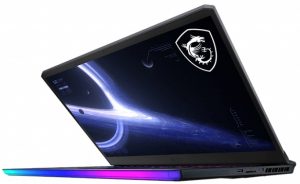
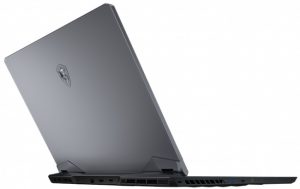
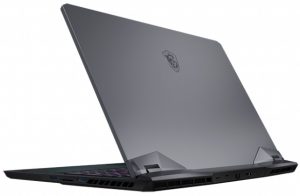

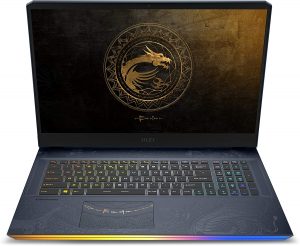
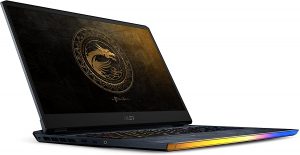
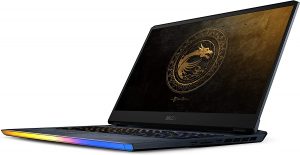

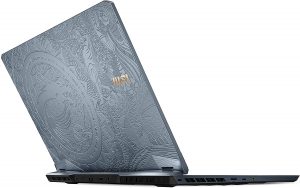
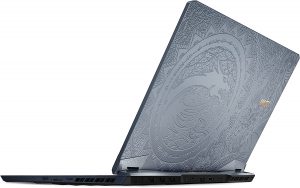
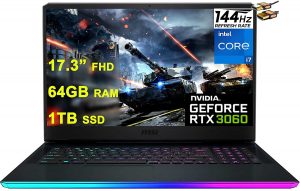
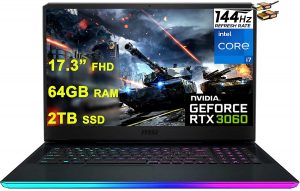

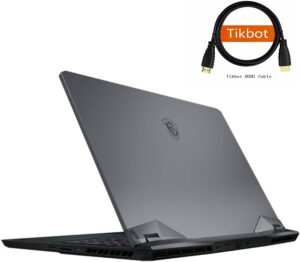
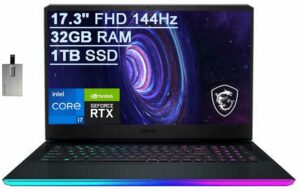
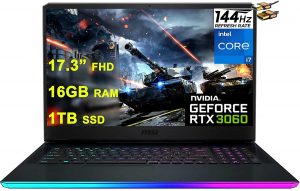
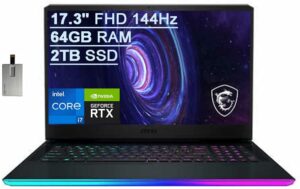
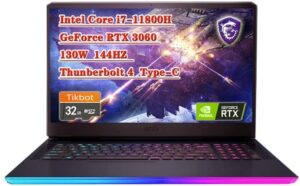
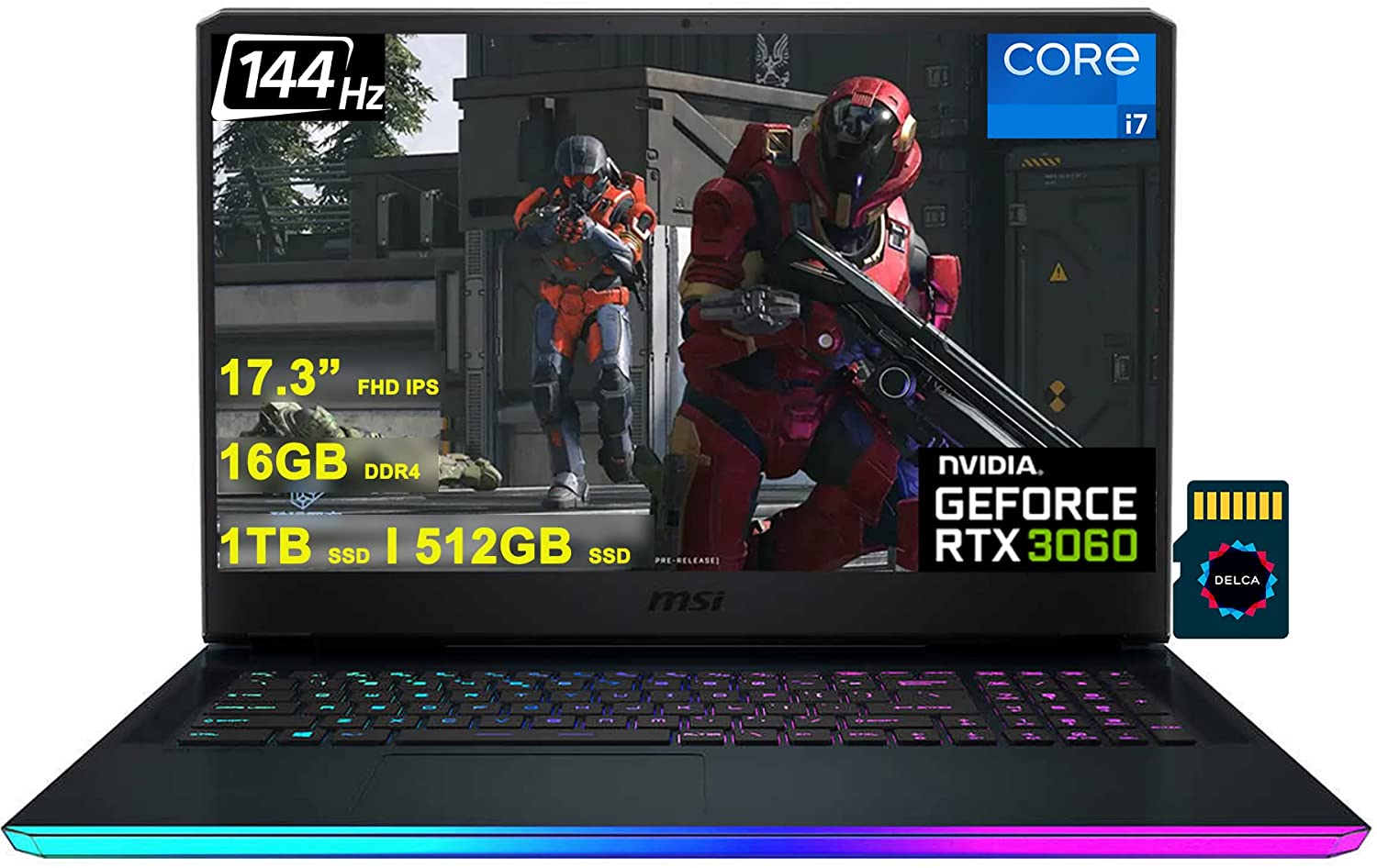
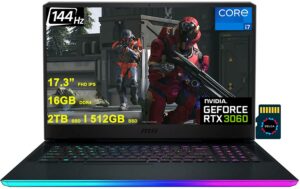
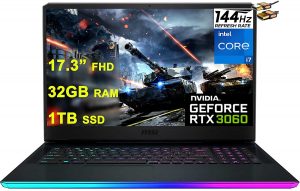
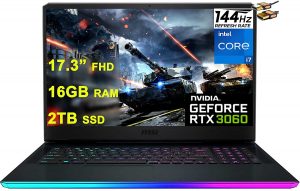
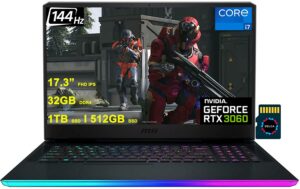

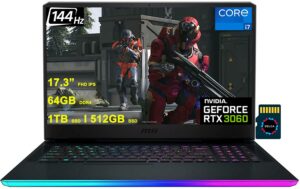
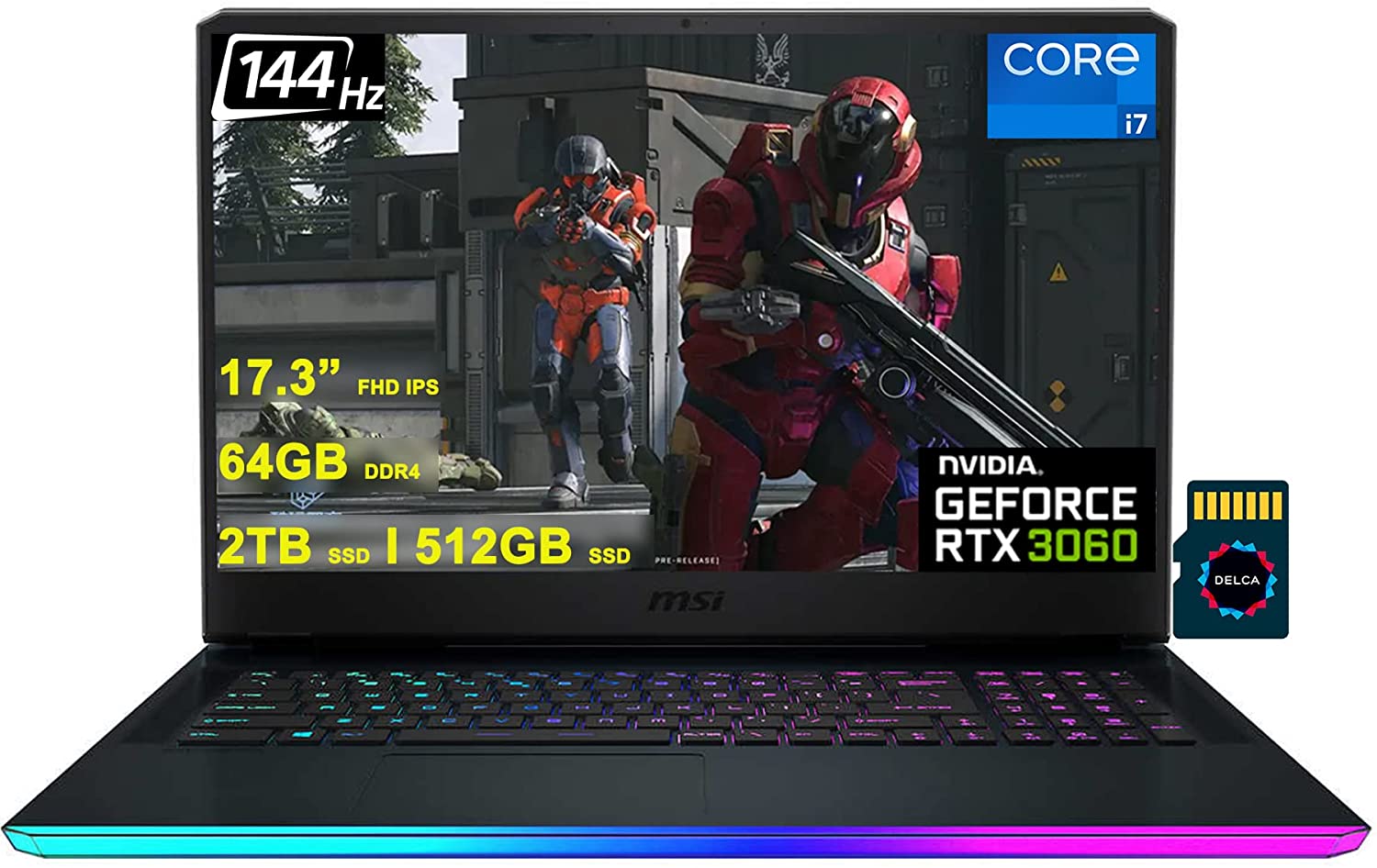


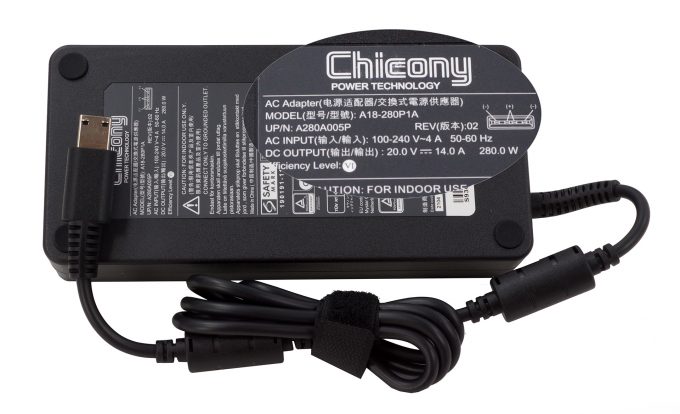


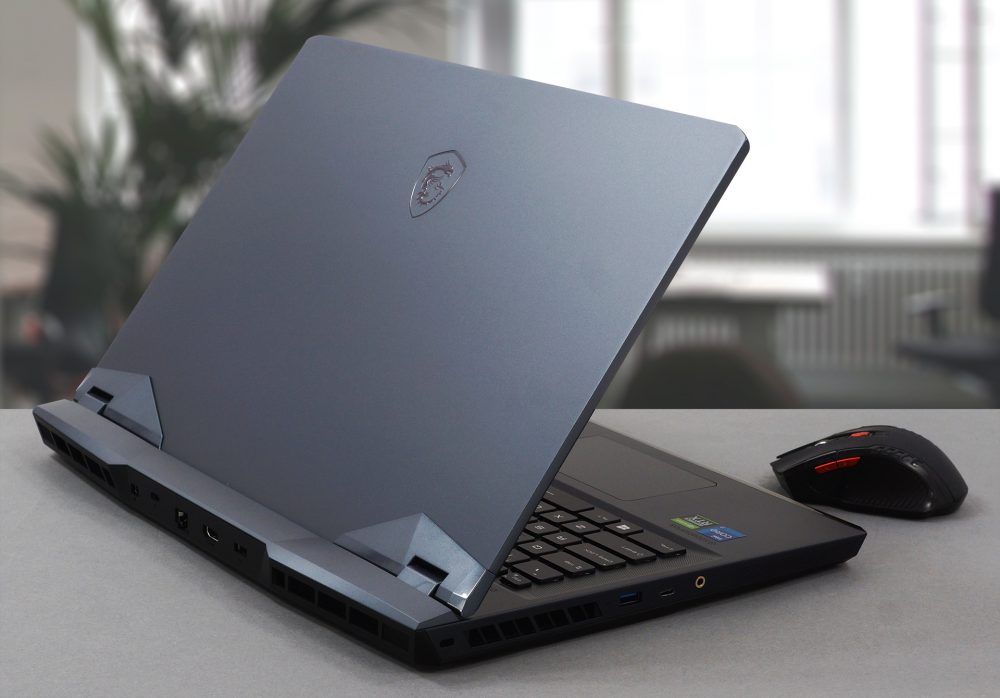
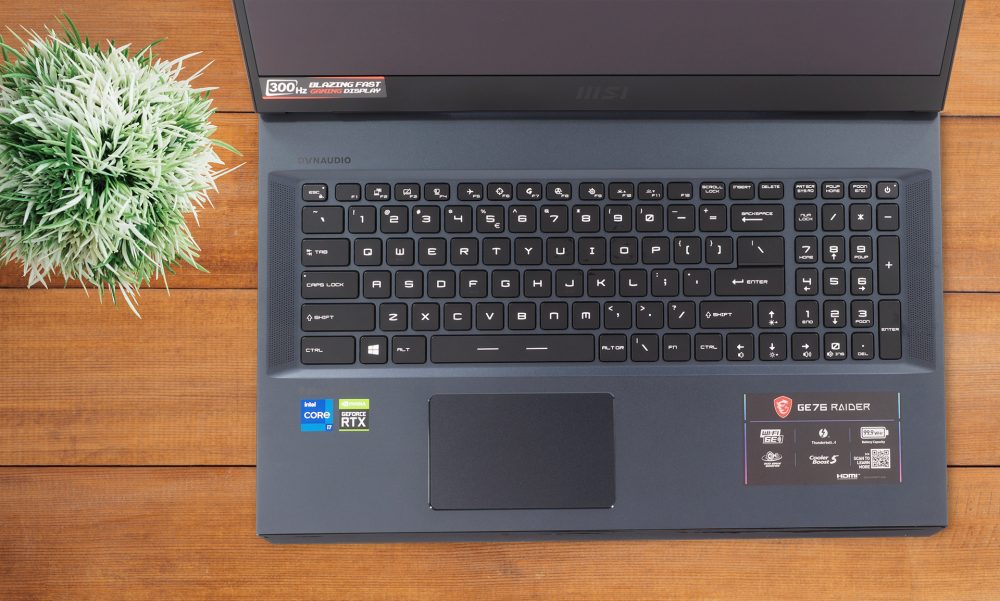
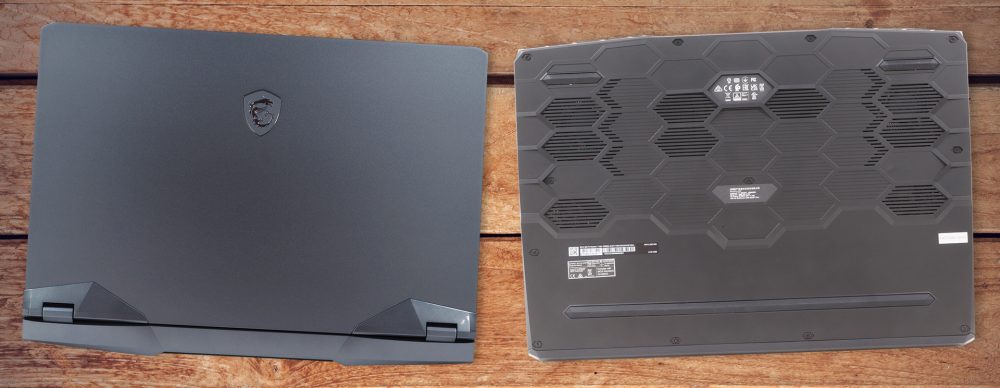



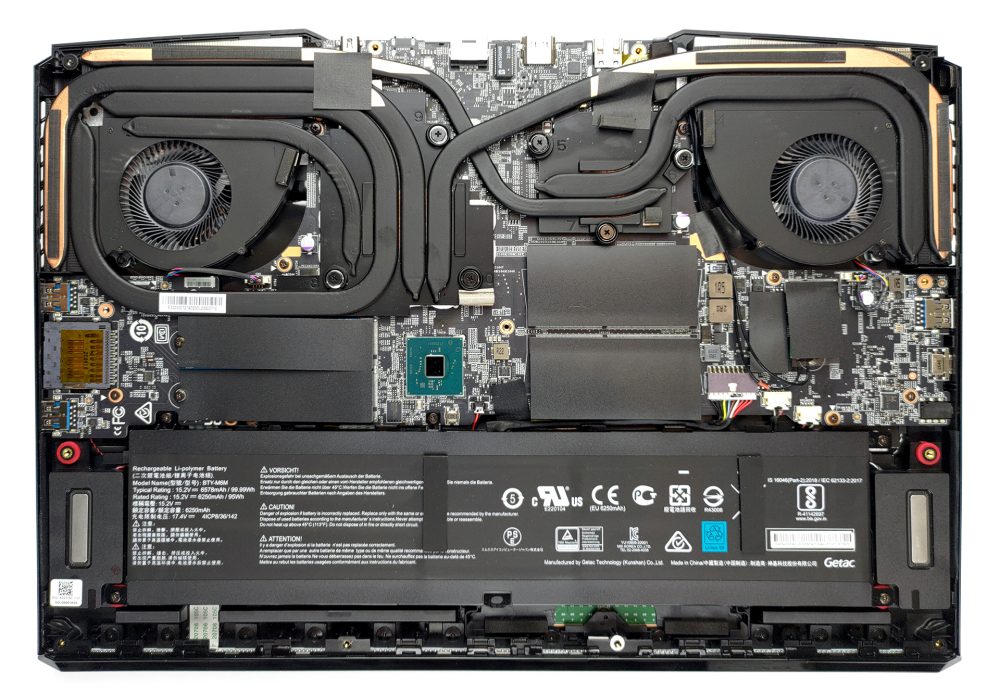

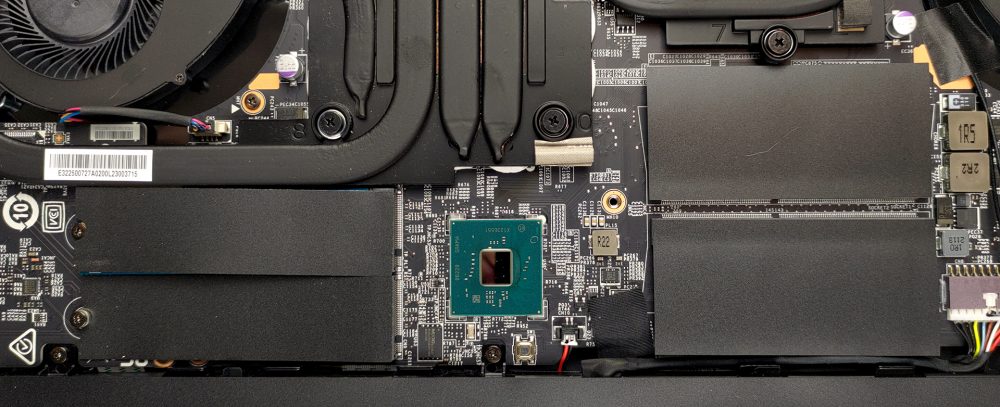
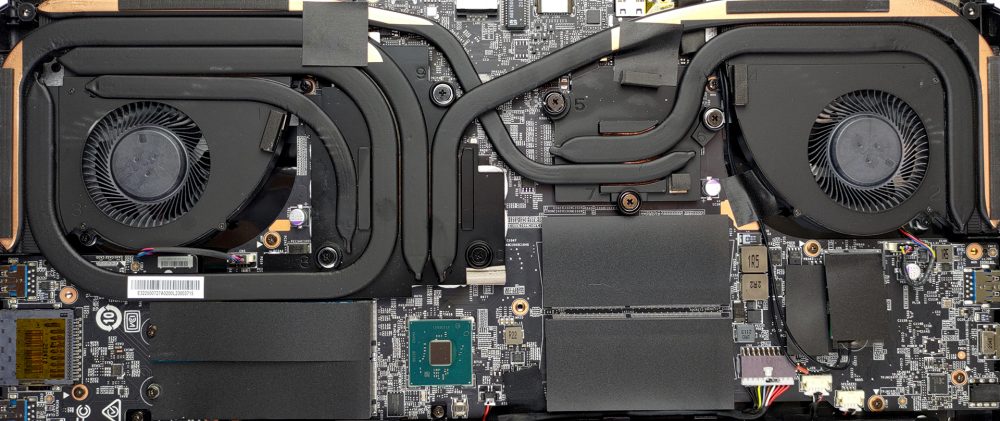
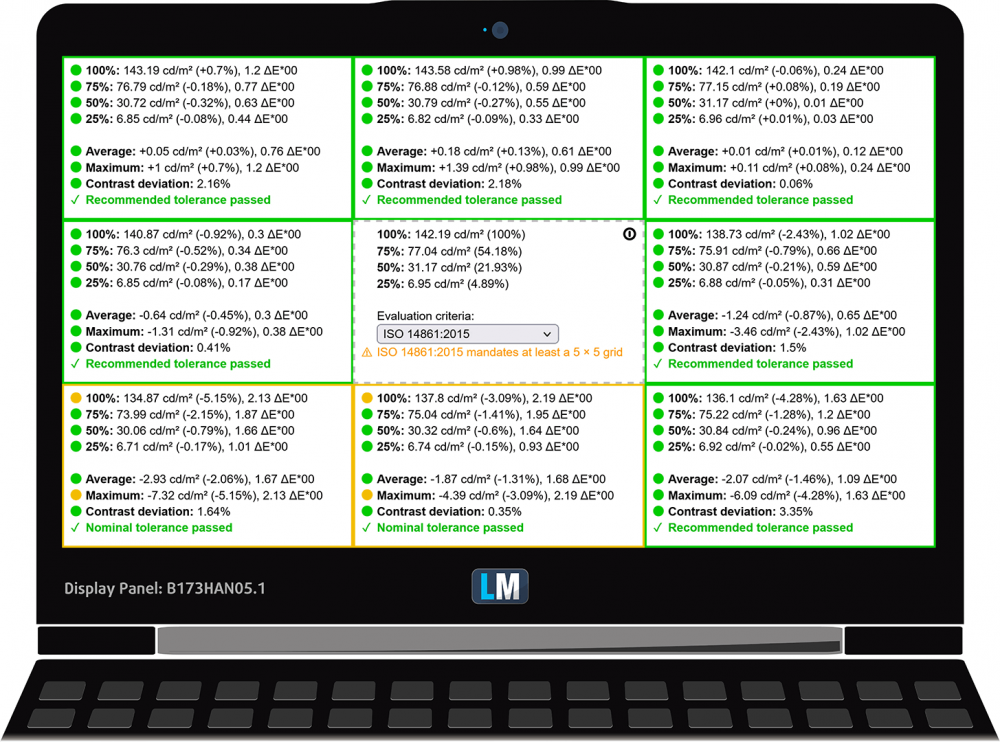








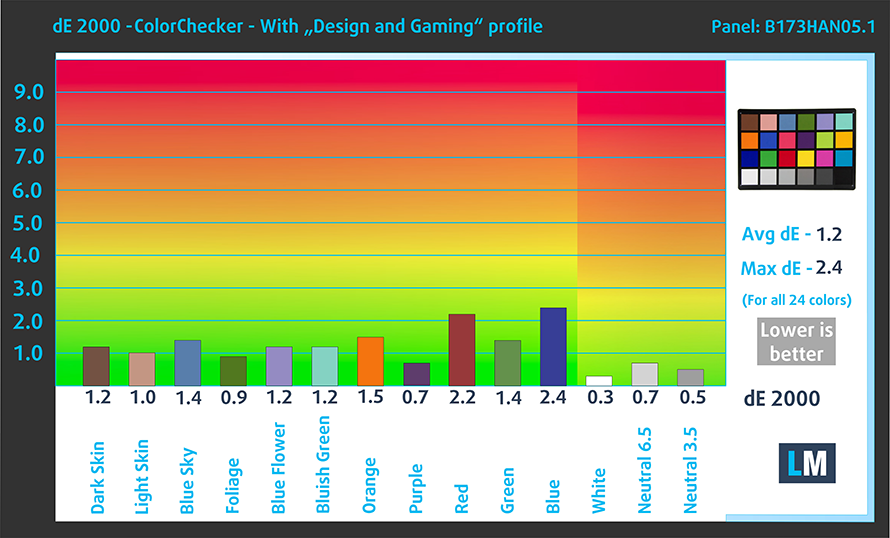

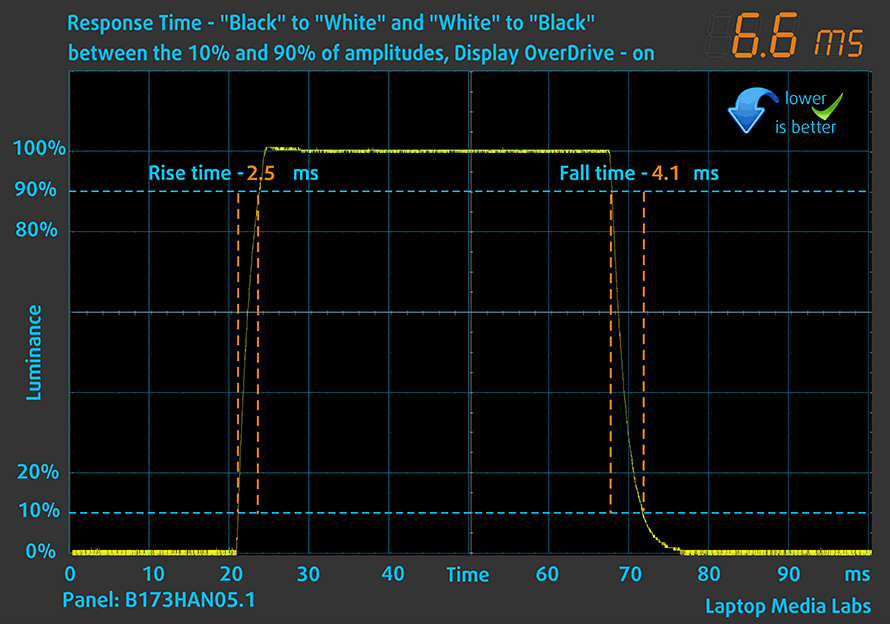
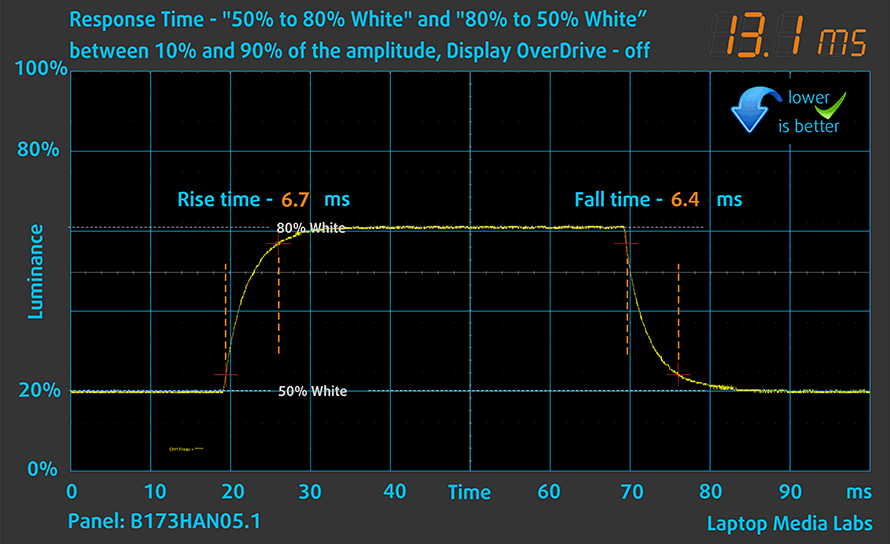
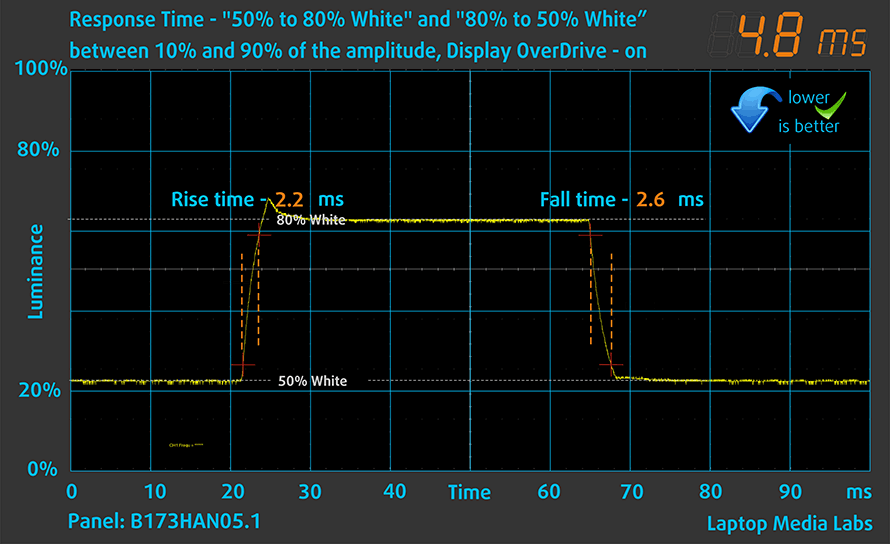

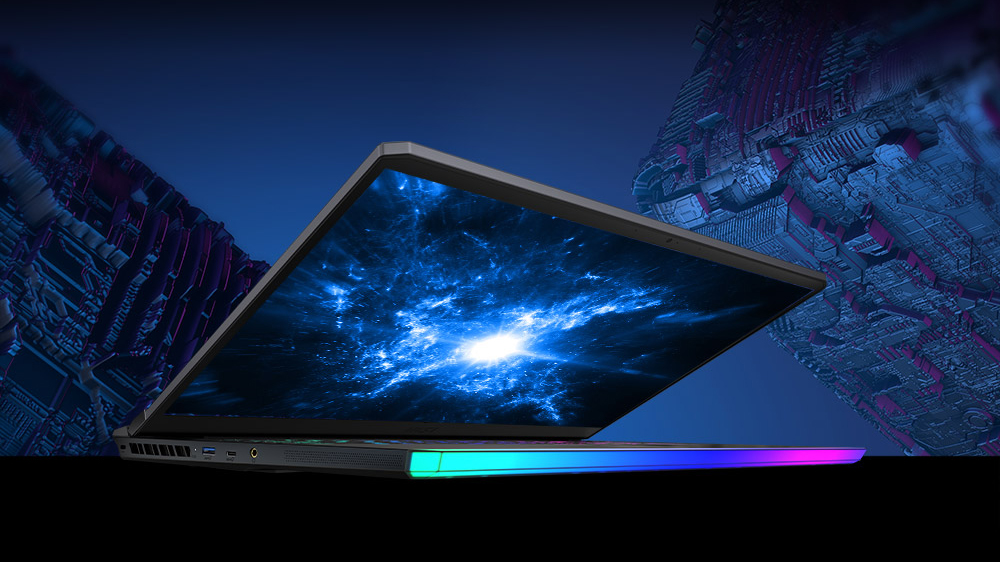

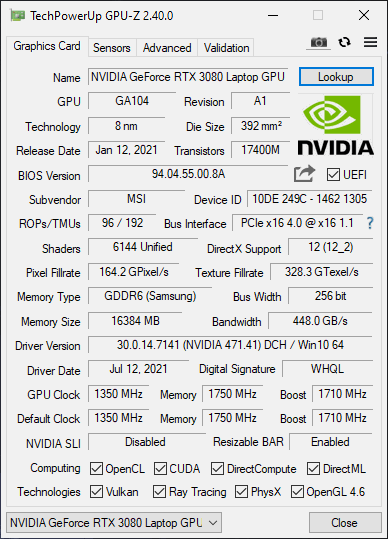








Your reviews are getting better and better. In the next step you could add more detailed noise measurements.